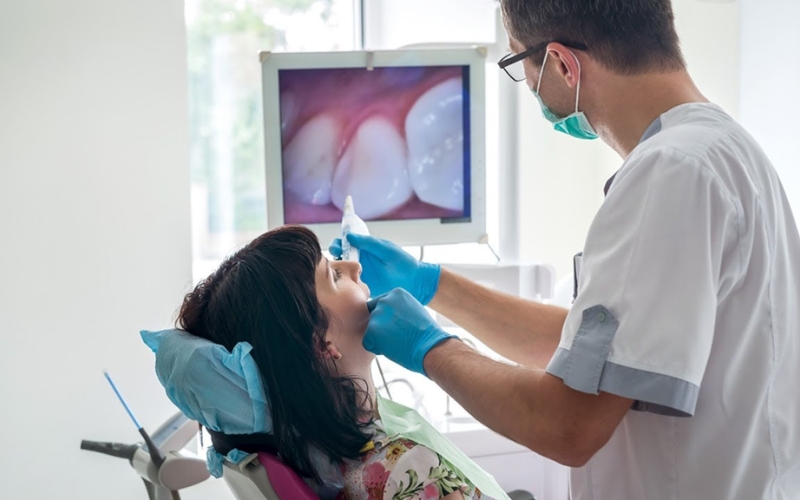
Role Of Bone Grafting In Reversing Gum Disease Damage
Gum disease, often referred to as periodontal disease, can wreak havoc on your oral health, leading to everything from gum recession to severe bone loss. When the bone supporting your teeth is damaged, it becomes difficult to maintain the stability and health of your smile.
However, bone grafting has emerged as a highly effective treatment to help reverse some of the damage caused by gum disease. In this blog, we’ll explore the important role of bone grafting in restoring lost bone structure, stabilizing teeth, and improving overall gum health.
Bone Grafting: Why Is It Needed for Gum Disease?
It is a surgical procedure used to replace or repair bone lost due to disease, injury, or other factors. In the case of gum disease, the infection can cause the jawbone to weaken and deteriorate, threatening the foundation of your teeth.
Without proper intervention, this bone loss can result in tooth mobility or, in severe cases, tooth loss.
How Bone Grafting Works?
- Restores Bone Loss: Bone grafting involves placing a grafting material into areas where the bone has been lost. This material can come from your own body, a donor, an animal source, or synthetic materials.
- Promotes Healing: The grafted material integrates with your natural bone over time, stimulating the regrowth of bone tissue and stabilizing your teeth.
- Prepares for Future Treatments: Bone grafting is often performed before other dental procedures, like dental implants, to ensure there is enough bone structure to support the new tooth.
How Gum Disease Causes Bone Loss?
Understanding how gum disease impacts your oral health is crucial to recognizing why bone grafting is so effective in restoring it.
- Gingivitis: This early stage of gum disease is characterized by inflamed and bleeding gums but usually doesn’t cause bone loss. At this point, treatment such as good oral hygiene and professional cleanings can usually reverse the condition.
- Periodontitis: As the disease progresses, bacteria from infected gums begin to reach deeper structures, including the bone. This leads to bone resorption, where the bone begins to break down and is slowly absorbed by the body.
- Advanced Periodontitis: In the most severe cases, extensive bone loss occurs, leading to loose teeth and gum recession. At this point, professional intervention, such as bone grafting, is often necessary to restore the missing bone structure and prevent further complications.
The Process of Bone Grafting for Gum Disease
If you’ve gone through significant bone loss due to gum disease, bone grafting can help restore your jawbone. Here’s what you can expect from the procedure:
1. Initial Consultation and Assessment
Before undergoing bone grafting, our dentist will conduct a thorough examination to assess the extent of the bone loss. This may involve X-rays, 3D imaging, and other diagnostic tools to plan the procedure.
The dentist will also discuss the type of bone graft material that will be best for your specific needs.
2. The Bone Grafting Procedure
Bone grafting is usually performed under local anesthesia, ensuring that you are comfortable during the procedure. The process involves:
- Cleaning the Affected Area: The area of bone loss will be cleaned to remove any infection.
- Placing the Graft Material: Grafting material will be placed into the bone defect area to promote healing and bone regeneration.
- Stitching the Gums: After the graft is placed, the gums will be stitched back together, and the healing process begins.
3. Healing and Recovery
The recovery period for bone grafting typically lasts a few weeks, but it can take several months for the grafted material to fully integrate with your natural bone. During this time, you’ll need to follow aftercare instructions carefully, including:
- Pain Management: Over-the-counter or prescription pain relievers may be prescribed to manage discomfort during recovery.
- Dietary Restrictions: Eating soft foods that don’t put pressure on the affected area is often recommended for the first few weeks.
- Regular Check-Ups: Follow-up visits will be scheduled to ensure proper healing and monitor progress.
Why Is Bone Grafting Essential for Gum Disease Treatment?
Bone grafting plays a critical role in treating gum disease and its associated bone loss. Here are some of the key benefits of this procedure:
1. Stabilizing Teeth
One of the most significant benefits of bone grafting is that it helps stabilize loose teeth caused by bone loss. By rebuilding the bone structure, the grafting procedure creates a stronger foundation for your teeth to rest on, preventing further movement or loss.
2. Preventing Tooth Loss
Without bone grafting, continuing bone loss can lead to the eventual loss of teeth. By restoring the bone, bone grafting can help prevent tooth extraction and maintain the health of your smile.
3. Supports Dental Implants
Bone grafting is often a prerequisite for dental implants. If you’re missing teeth due to gum disease, a bone graft will restore the necessary bone structure to support implants. This makes implants a viable option even for patients who’ve experienced significant bone loss.
4. Promotes Gum Health
Gum tissue naturally attaches to bone, so when bone is lost, gum recession often follows. By regrowing bone, bone grafting can help prevent further gum recession and improve overall gum health, reducing the risk of future infections.
In the end, gum disease is a progressive condition that can cause significant damage to your oral health, especially when it leads to bone loss. However, with bone grafting, you have an effective way to restore lost bone and prevent further damage.The procedure not only stabilizes your teeth but also supports future treatments like dental implants and promotes better gum health. If you’ve suffered from gum disease and are concerned about bone loss, consult with a periodontist today to see if bone grafting is your option.
